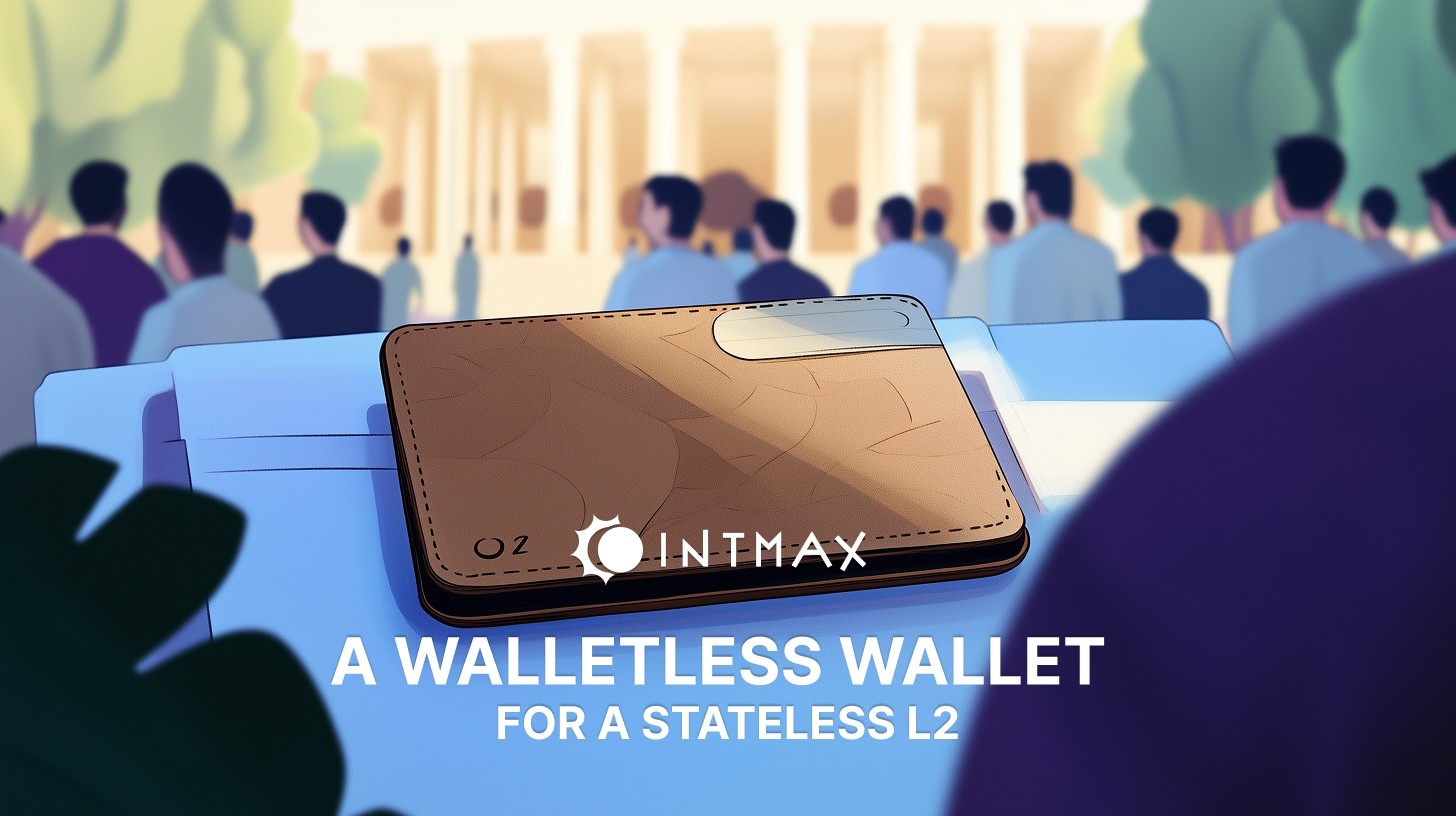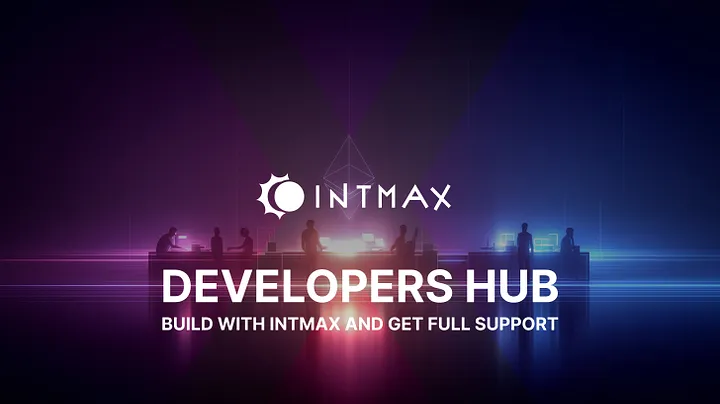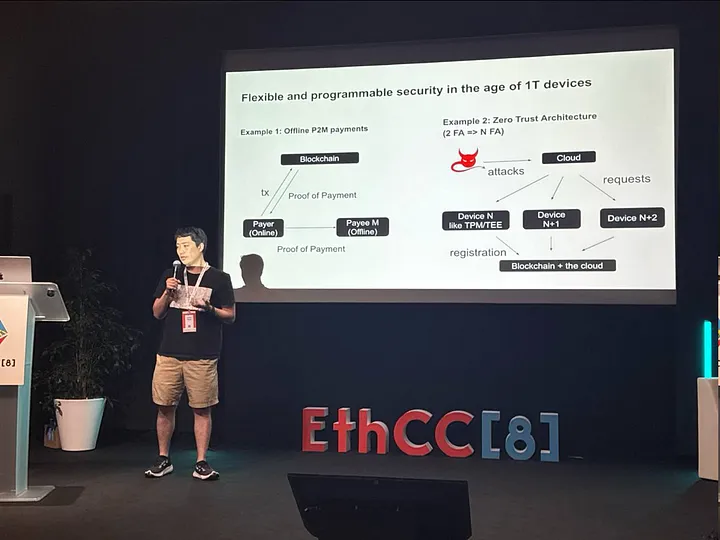Blog
Insights
A Walletless Wallet for a Stateless L2
INTMAX redefines DeFi with its walletless, stateless L2—secure, private, and user-friendly.

Intmax
Mar 27, 2025
Introduction
While Ethereum has been criticized for its problems solving the scalability and interoperability problems inherent in the network, INTMAX has been at the forefront of this battle, quietly solving many of the concerns surrounding Ethereum. INTMAX has developed the first Stateless L2 solution capable of providing support for global payment adoption. With its Stateless architecture, INTMAX has side-stepped the issue of data availability by allowing users to leverage and store local Zero-Knowledge Proofs (ZKPs) for computation requirements, thus providing transaction data in ~5-bytes. This revolutionary approach to L2 scalability is poised to be a disruptive force in the race for Ethereum scalability. As such, INTMAX needed a wallet that is just as unique. Traditionally, in EVM-based rollups like Optimistic of zkEVMs, user transaction information is persistently stored on-chain, necessitating that users interact with smart contracts using standard wallets (MetaMask, etc.). The rollup maintains the transaction state data of each of its users, including balances, transaction history, etc. On INTMAX, however, an entirely different approach is required for DeFi interaction — a walletless wallet. But what does it mean to have a walletless wallet?
What is a Walletless Wallet?
A walletless wallet is a cryptographic or biometric authorization system that uses ZKPs to sign and authenticate transactions without the requirement to store private keys or on-chain accounts. In TradFi, account management is implemented through secure usernames and passwords with account recovery options, including answering questions and validating financial information. In crypto, however, the primary reasoning undergirding this traditional approach to account management was made moot as the cypherpunk ethos of decentralization, security, privacy, and self-sovereignty came to define digital finance for the future. As such, wallets are equipped with private keys and seed phrases. This account-based security was developed to give users full control over self-custodied digital assets at the outset of the blockchain industry.Everyone has heard the phrase, “Not your keys, not your crypto,” which means that only users with a digital wallet with the full private key can access and secure funds independently of a third-party intermediary. In the world of INTMAX, though, this phrase no longer applies as a walletless wallet upends this model of securitization of digital assets, using ZKPs to validate transactions instead of private keys.So, how does it function, exactly? The walletless user experience uses keyless authentication methods like social logins, biometric verification, or ZKPs to authenticate transactions by leveraging off-chain computation. This off-chain computation enables a user to no longer need to remember or elaborately store a pesky 24-word seed phrase for account recovery. Users can use technologies they are familiar with for login and recovery, including biometrics, passkeys, or social logins. This elegant approach empowers users in the account recovery process without the horrifying notion that by losing your seed phrase a user has also lost all access to acquired digital assets. Instead of users submitting transactions with a private key, they are now able to prove ownership through a low-cost ZKP without revealing the private key. This means no seed phrase, no lower gas fees, faster transaction processing, no on-chain accounts, and no persistent private keys. Welcome to the future of DeFi.
The Drawbacks and Trade-offs
This implementation requires the analysis of an important question: “If the wallet is abstracted, who holds the keys or has access to the credentials?” Simply put, if the authentication method relies on passkeys or biometrics reliant on off-chain services through Google or Apple, access could be dependent upon authorization from third-party organizations, introducing centralization risk. This concern is fully understandable as this walletless wallet does not allow for one user to have full control over the entire private key.The short answer lies in the technologies that power the wallet-less wallet, namely Multi-Party Computation (MPC) and Fully Homomorphic Encryption (FHE). MPC is a cryptography technique that allows for the joint computation of a function over inputs without revealing private data to each other. This means that the full private key is never stored in one place.This creates some risks to the user in that a user does not have full sovereignty over assets. Transactions can be delayed or denied if many MPC nodes are offline or compromised. If a controlling entity chooses to blacklist an address, it is possible that a user could lose access to their funds altogether. MPC wallets can be as secure as traditional wallets if redundancies are maximized and multiple escape mechanisms exist.FHE, on the other hand, is a cryptographic breakthrough that allows computation to occur on encrypted data without decrypting it for processing while ensuring that raw private data is protected during the process. Since the private key remains encrypted, users can access their walletless wallet from any device. This design makes unauthorized access to private keys virtually impossible, as the private key is encrypted throughout the transaction signing process and posted on-chain. This INTMAX walletless wallet design implemented MPC, FHE, and ZKPs, making this wallet one of the most secure, private, and scalable wallets available.
Future Outlook: The Evolution of Walletless Systems
Walletless wallets are becoming more popular with implementations by MetaMask, Ethereum account abstraction, EIP 4337, the Lightning network on Bitcoin, and more. Each of these offers a similar approach to INTMAX’s walletless wallet, providing social logins, passkey authentication, and ZKPs. The future may be a walletless future, making walletless wallets multi-chain standards.Despite these innovative projects and anticipated future possibilities, there are several issues that must be solved before global onboarding of the scalable walletless wallet, including decentralization concerns, security, user experience, and minimizing attack vectors. Some of these concerns can potentially be resolved using Decentralized Identity (DID) or Ethereum Name Service (ENS), which could integrate with MPC authentication or replace seed phrases altogether.The possibilities for centralization from MPC implementations are concerning since the system is reliant on a small number of providers. The obstacle will be to ensure true decentralization of the walletless wallet while ensuring that the process is still user-friendly to support global adoption. A final concern is the increase of certain attack vectors that users are familiar with. If your authentication mechanisms are compromised by attackers, it’s possible that funds could be stolen.This should not be a reason not to pursue the walletless wallet, though, as the INTMAX implementation resolves the greatest concerns around digital asset security for mainstream users. INTMAX is again revolutionizing development in the blockchain and crypto industries. Users are poised to experience faster onboarding with more familiar mechanisms of authorization and security, while developers could see reduced friction in dApp integration.
Conclusion
Greater scalability for global adoption has always been the main driving force of the development process in the blockchain industry, and the walletless wallet is no different. The walletless wallet is the next logical step in the development roadmap of the entire industry to allow for seamless user onboarding experiences, enhanced yet familiar security mechanisms that reduce overall friction, and support the development of further interoperability of dApps in the Ethereum ecosystem.INTMAX is leading the way in rethinking digital asset ownership. Removing barriers to entry and generating unique approaches to scalability for all. Though there are tradeoffs to consider regarding MPC centralization, attack vectors, and self-custody, wallets as we have come to know them are likely to be phased out as blockchain continues to resolve payments and scalability concerns.
Resources:
What is a Multi-Party Computation (MPC) wallet?
https://www.coinbase.com/learn/wallet/what-is-a-multi-party-computation-mpc-walletExploring Privacy in Digital Transactions: FHE, MPC, and ZKP
https://orochi.network/blog/Exploring-Privacy-in-Digital-Transactions-FHE-MPC-and-ZKP-UnveiledSeedless Self-Custody: On MPC and Smart Contract Wallets
https://medium.com/1kxnetwork/wallets-91c7c3457578How to Create INTMAX Walletless Wallet
https://www.youtube.com/watch?v=2pRTKML5O0kTowards a Web3 Without Wallets
https://www.nasdaq.com/articles/towards-a-web3-without-walletsHyper Security from anywhere
https://inwallet.intmax.io/Understanding the Concept of Fully Homomorphic Encryption (FHE)
https://medium.com/%40intmaxafrica/understanding-the-concept-of-fully-homomorphic-encryption-fhe-f793b4562a46INTMAX Launches “Walletless Wallet” for Seamless Cryptocurrency Transactions
https://mpost.io/intmax-launches-walletless-wallet-for-seamless-cryptocurrency-transactions/INTMAX: Seamless, Simple and Stateless
https://www.publish0x.com/thisismonarch/intmax-seamless-simple-and-stateless-xkeykjlWhat is a Biometric Wallet? Best Fingerprint Wallets for Security
https://materialbitcoin.com/en/blog/biometric-crypto-wallet/INTMAX Wallet
https://guide.wallet.intmax.io/



